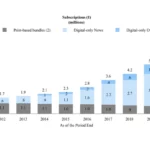Are you tired of fluorescent lights causing headaches and eye strain for you and your students? Do you want to improve the learning environment in your classroom? Look no further than fluorescent light filters. These filters soften the harsh light emitted by fluorescent bulbs, creating a more relaxing atmosphere that can reduce eye strain and anxiety among students. In this article, we’ll explore the benefits of using fluorescent light filters in the classroom, as well as where to find discounts on these helpful tools. Say goodbye to harsh fluorescent lighting and hello to a better learning experience with fluorescent light filters.
Contents
- What Are Fluorescent Light Filters?
- Benefits of Fluorescent Light Filters for Teachers
- Discounts for Teachers
- Conclusion
-
Frequently Asked Questions
- What are the benefits of using fluorescent light filters?
- Can fluorescent light filters prevent UV radiation?
- What types of environments are fluorescent light filters suitable for?
- How can teachers benefit from using fluorescent light filters?
- What is the difference between fluorescent light covers and fluorescent light tube covers?
- Can fluorescent light filters save money?
- What is Irlen Syndrome?
- How can fluorescent light filters help with Irlen Syndrome?
- Are there any discounts available for teachers?
- How do I install fluorescent light filters?
- References
What Are Fluorescent Light Filters?

Fluorescent light filters are coverings that are placed over fluorescent lights to reduce their brightness and glare. These filters work by softening the harsh light emitted by the fluorescent bulbs, creating a more soothing and calming environment. There are different types of fluorescent light filters available, including those that block UV rays and full spectrum light filters that mimic natural sunlight. These filters offer numerous benefits to teachers, including reduced headaches and eyestrain among students, as well as an improved learning environment. If you are a teacher looking for discounts on fluorescent light filters, there are several websites that offer teacher freebies, including discounts on educational products like stepping stones for kids, adventure academy free memberships, and wooden 3D puzzles.
How Do They Work?
Fluorescent light filters work by blocking certain wavelengths of light emitted by fluorescent bulbs, which can cause eye strain, headaches, and other health issues. These filters typically consist of a thin, flexible sheet of material that is placed over the bulb or fixture. When installed properly, the filter reduces the intensity of the light and diffuses it, creating a softer, more natural-looking glow. Some filters are also designed to block UV radiation, which can be harmful to the skin and eyes.
There are several types of fluorescent light filters available, each with its own set of benefits and drawbacks. Some of the most common types include:
- Diffusers: These filters are designed to scatter the light more evenly and reduce glare, making it easier on the eyes. They are often made from frosted glass or plastic.
- Color filters: These filters change the color of the light, which can be helpful in creating a more relaxed atmosphere or for simulating natural light. They are available in a wide range of colors and tints.
- UV filters: These filters block harmful UV radiation while allowing visible light to pass through. They are particularly useful in classrooms and other settings where people may be exposed to fluorescent light for extended periods of time.
Fluorescent light filters are an effective way to improve the quality of light in a classroom or office setting, reducing eye strain, headaches, and other health issues while creating a more comfortable and inviting learning environment.
Types of Fluorescent Light Filters
There are several types of fluorescent light filters available on the market that teachers can use to create a more comfortable learning environment for their students. One type of filter is the diffuser panel, which is designed to soften the harsh, bright light emitted by fluorescent bulbs. These panels come in a variety of colors and designs, such as sky and cloud patterns or calming green hues, which can help create a more soothing atmosphere in the classroom.
Another type of filter is a UV-blocking filter, which is designed to protect students from harmful UV radiation emitted by fluorescent bulbs. This type of filter is especially important for classrooms with large windows or for students with photosensitivity or other light-sensitive conditions.
Some fluorescent light filters are designed to reduce glare and eyestrain, making it easier for students to read and concentrate. These filters typically have a frosted or textured surface that diffuses the light and reduces the intensity of the glare.
Finally, there are filters designed to adjust the color temperature of fluorescent lights, making them more similar to natural daylight. These filters can help create a more pleasant and inviting atmosphere in the classroom.
Teachers can choose from a variety of fluorescent light filters depending on their needs and preferences. Some popular brands include Educational Insights, NaturaLux, and Snap-Crayons. With so many options available, it’s easy to find a filter that suits your classroom and your teaching style.
If you’re interested in other teacher freebies, check out our page on teacher freebies for discounts and promotions on educational resources such as quizzes, games, and puzzles.
Benefits of Fluorescent Light Filters for Teachers

Fluorescent light filters have numerous benefits for teachers. The reduction of headaches and eye strain is one of the most significant advantages of these light filters. The glare and flickering from fluorescent lights can cause discomfort and pain, which can lead to distractions and a lack of focus for both teachers and students. Additionally, these filters create an improved learning environment by reducing anxiety and hyperactivity among students and promoting relaxation. With the use of fluorescent light filters, teachers can expect to see an increase in student performance and a more comfortable and productive classroom environment.
Reduced Headaches and Eye Strain
One of the main benefits of using fluorescent light filters is that they can significantly reduce headaches and eye strain for teachers. The harsh glare and flicker emitted from overhead fluorescent lights can cause discomfort and even pain for individuals who are sensitive to light. By softening and diffusing the light, fluorescent light filters can create a more comfortable and soothing environment for teachers, which can lead to increased productivity and better overall health.
Research has shown that exposure to blue light, which is abundant in fluorescent lighting, can disrupt the body’s natural sleep-wake cycle and cause sleep disturbances. Fluorescent light filters can help to reduce this disruption and promote better sleep quality, which can have a positive impact on overall health and well-being.
Some common types of fluorescent light filters that can help to reduce headaches and eye strain include:
- Diffusers: These filters are designed to scatter the light and reduce glare. They can be made from a variety of materials, including plastic, acrylic, and glass, and can be installed directly over the light fixture.
- Color Filters: These filters are designed to alter the color of the light and reduce the amount of blue light. They can be made from colored plastic or film and can be attached directly to the light fixture or the light cover.
- Decorative Covers: These filters are designed to provide a decorative element to the classroom while also reducing glare and softening the light. They can be made from a variety of materials, including fabric, paper, or stained glass, and can be attached directly to the light fixture or the light cover.
By choosing the right type of fluorescent light filter, teachers can create a more comfortable and productive learning environment, free from the discomfort of headaches and eye strain.
Improved Learning Environment
Using fluorescent light filters in classrooms can greatly improve the learning environment for students. The soft light produced by the filters creates a calming atmosphere that reduces stress and anxiety, allowing students to focus better on their studies. Additionally, the filters reduce the harsh glare and flicker associated with fluorescent lighting, which can cause eye strain and headaches. This means that students can spend more time on their work without experiencing discomfort.
Studies have shown that proper lighting can have a significant impact on student performance and behavior. By using fluorescent light filters, teachers can create a more conducive learning environment that promotes academic success. The filters can help to improve the overall atmosphere of the classroom, making it a more pleasant and inviting space for students to learn.
In combination with other educational tools and resources, such as Quizlet student discounts or teaching with movies, fluorescent light filters can be an important part of creating a positive and effective learning environment for students.
Discounts for Teachers
As a teacher, you may be interested in purchasing fluorescent light filters for your classroom to reduce headaches and eye strain and improve the learning environment. Luckily, there are discounts available for teachers looking to purchase these filters. You can find these discounts on websites such as Stepping Stones for Kids, which offers a 10% discount on all orders for teachers, and Adventure Academy, which offers a free teacher account. Additionally, some retailers may offer discounts for bulk orders, so be sure to inquire about this option as well. With these discounts, you can provide a more comfortable learning environment for your students without breaking the bank.
Where to Find Discounts
Finding discounts on fluorescent light filters for teachers is easy if you know where to look. Many educational suppliers offer discounts to teachers, so it’s important to check with them first. Educational supplier websites, such as Stepping Stones for Kids or Adventure Academy Free, are great places to start. You can also check out websites that offer discounts on educational products, like Grammarly for Education or Free Rosetta Stone. Another option is to look for discounts on general school supplies websites, such as Wooden 3D Puzzles or Ant Farms for Kids. Make sure to also check with your school district or local education association to see if they offer any discounts or resources for teachers. By taking advantage of these discount opportunities, you can save money while still providing a healthier and more productive learning environment for your students.
How to Get Discounts
If you are a teacher looking to purchase fluorescent light filters, there are several ways to get discounts on your order. The first step is to check with the manufacturer or retailer to see if they offer any discounts for educators. Many companies offer discounts specifically for teachers, so it’s worth checking to see if you qualify.
Another option is to search for coupon codes online. Websites like RetailMeNot and Coupons.com often have discount codes available for a variety of products, including fluorescent light filters. Simply search for the name of the manufacturer or retailer along with the term “coupon code” to see if there are any available.
If you are a student, you may also be eligible for a discount on fluorescent light filters. Some companies offer student discounts, so it’s worth checking with the manufacturer or retailer to see if you qualify. Some companies partner with student discount programs like Quizlet to offer exclusive discounts to students. If you are a student, be sure to check out the Quizlet student discount to see if you can save on your purchase.
There are several ways to get discounts on fluorescent light filters as a teacher or student. By checking with the manufacturer or retailer, searching for coupon codes online, and exploring student discount programs, you can save money on your purchase and create a more comfortable and productive learning environment for yourself and your students.
Conclusion
In conclusion, fluorescent light filters can have a significant impact on the learning environment of a classroom. By reducing headaches, eye strain, and fatigue, students can focus better and retain information more easily. Additionally, the softened light can create a more calming atmosphere, which can lead to a more positive mood and improved behavior. As a teacher, it is important to consider the benefits of using fluorescent light filters in your classroom. Don’t forget to check out the discounts available for teachers to make this investment even more affordable. Visit /quizlet-student-discount/ to learn more about how you can get a discount on fluorescent light filters for your classroom.
Frequently Asked Questions
What are the benefits of using fluorescent light filters?
Fluorescent light filters can help reduce headaches, eyestrain, and fatigue. They can also improve mood, focus, and even help with sleep.
Can fluorescent light filters prevent UV radiation?
Yes, fluorescent light filters can block harmful UV rays that can damage your body and fade materials.
What types of environments are fluorescent light filters suitable for?
Fluorescent light filters are suitable for offices, classrooms, retail stores, healthcare facilities, and industrial settings.
How can teachers benefit from using fluorescent light filters?
Teachers can benefit from reduced headaches and eyestrain, and an improved learning environment for their students.
What is the difference between fluorescent light covers and fluorescent light tube covers?
Fluorescent light covers are used to cover the entire fixture, while fluorescent light tube covers are used to cover individual tubes.
Can fluorescent light filters save money?
Yes, fluorescent light filters can save money by reducing the need for costly lighting upgrades or replacements.
What is Irlen Syndrome?
Irlen Syndrome is a visual processing disorder that can cause difficulty reading, headaches, and eye strain.
How can fluorescent light filters help with Irlen Syndrome?
Fluorescent light filters can help reduce the symptoms of Irlen Syndrome by reducing glare and improving visual processing.
Are there any discounts available for teachers?
Yes, there are discounts available for teachers on fluorescent light filters. See our Discounts for Teachers section for more information.
How do I install fluorescent light filters?
Installation of fluorescent light filters is typically easy. Simply slide the cover into place over the light fixture or tube.






